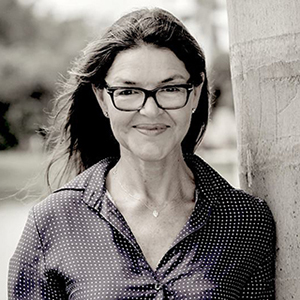Claire Paris
Co-Principal Investigator
Professor
University of Miami
cparis@rsmas.miami.edu
Claire Paris is a biological oceanographer interested in bio-physical interactions during the early life history (ELH) stages of fish and other marine organisms with a planktonic phase. She is particularly fascinated with the diversity of larval fish morphologies and their specific adaptations to the planktonic environment. She specializes in larval dispersal and migration focusing, inter alia, on biophysical mechanisms for long-distance transport or retention, ontogenetic migrations, and the use of chemical, acoustic, magnetic, and celestial cues to navigate and find nursery or settlement habitat. She has unique inter-disciplinary expertise in oceanography and larval fish taxonomy and ecology. She integrates these fields by developing numerical and empirical approaches to understand dispersion and fate of larvae in the ocean and unravelling the fundamental processes controlling marine population connectivity and resilience.
Paris has pioneered the concept of a Lagrangian observational platform with the Drifting In Situ Chamber (DISC). The DISC is designed to detect larval fish orientation and their cues in the pelagic environment. In parallel, she developed an open-source, probabilistic Lagrangian software, the Connectivity Modeling System (CMS), to estimate biotic and abiotic 4-dimensional transport, fate, and connectivity across scales. The CMS is currently used in NOAA fish stock assessment, as well in global studies of dispersal barriers for a variety of planktonic organisms. The oil-application of the CMS funded though NSF RAPID Response Research and GOMRI, was instrumental to track the deep oil plume during the Deepwater Horizon (DWH) blowout and report on natural oil dispersion.
The RECOVER consortium offers Paris’ lab the unique opportunity to investigate dynamic physical-biological interactions at the physiological-level via Lagrangian modeling of the transport and survival of fish embryos under UV exposure and PAHs stressors. This synthetic numerical modeling work integrates research over multiple scales across PIs of the consortium.




